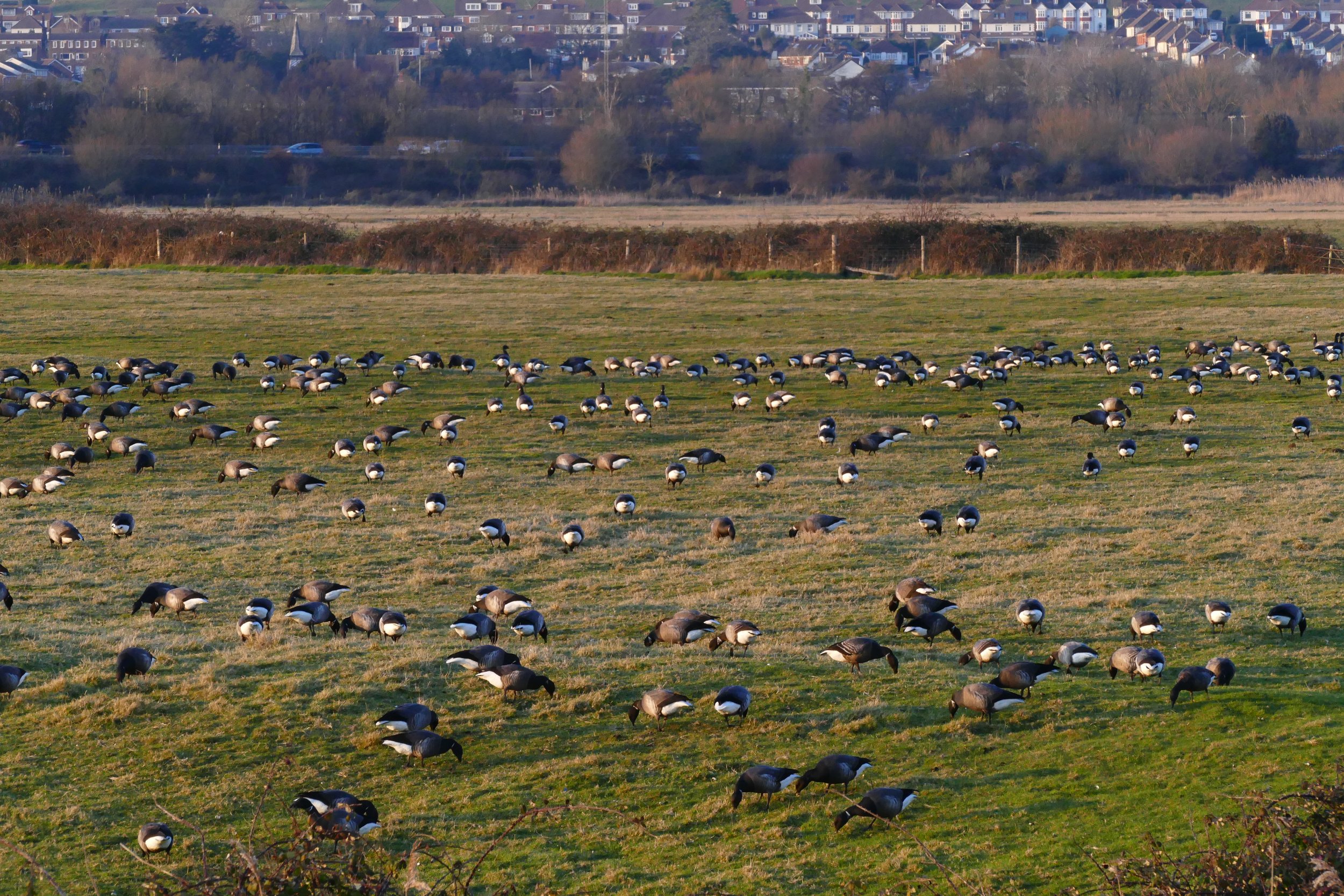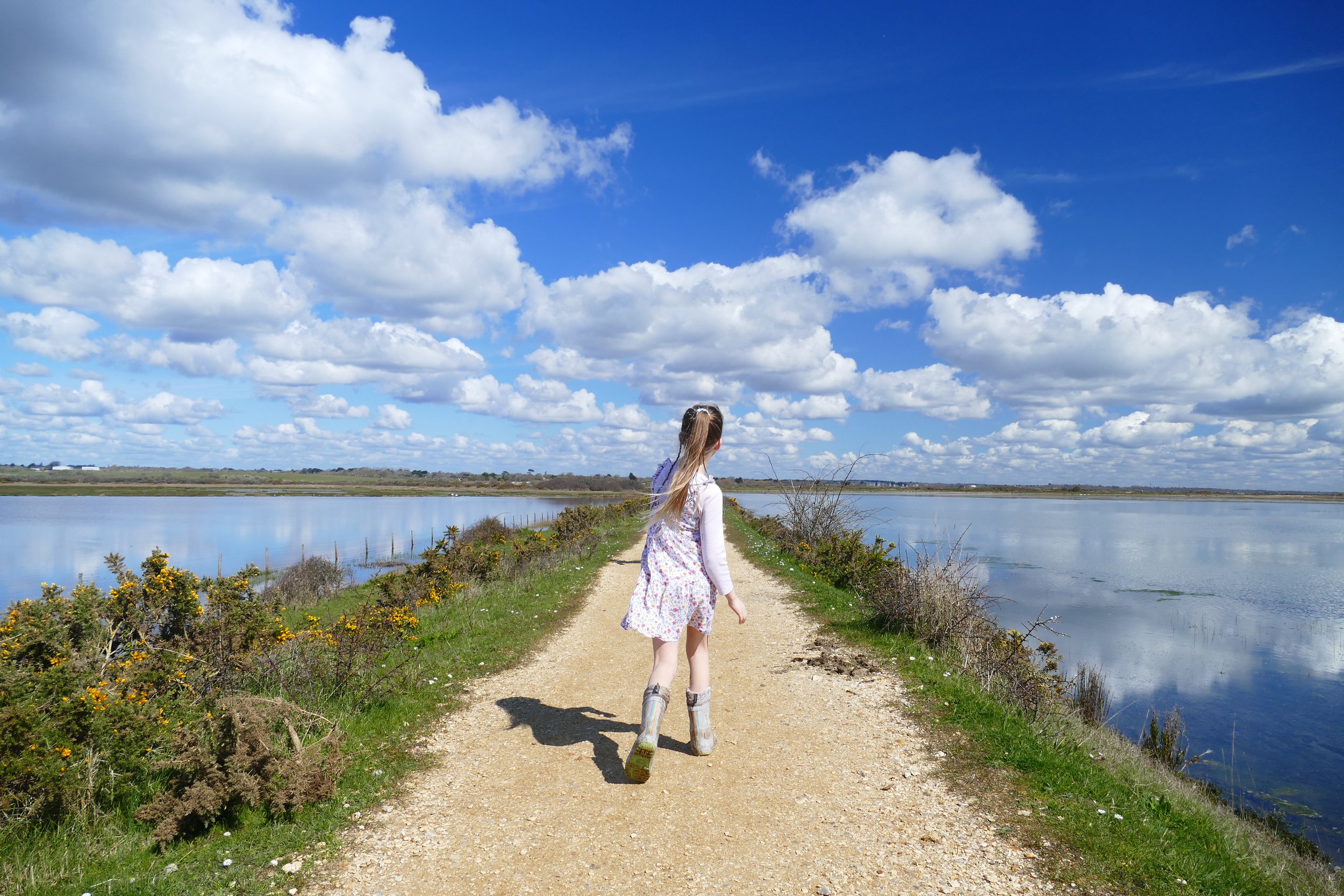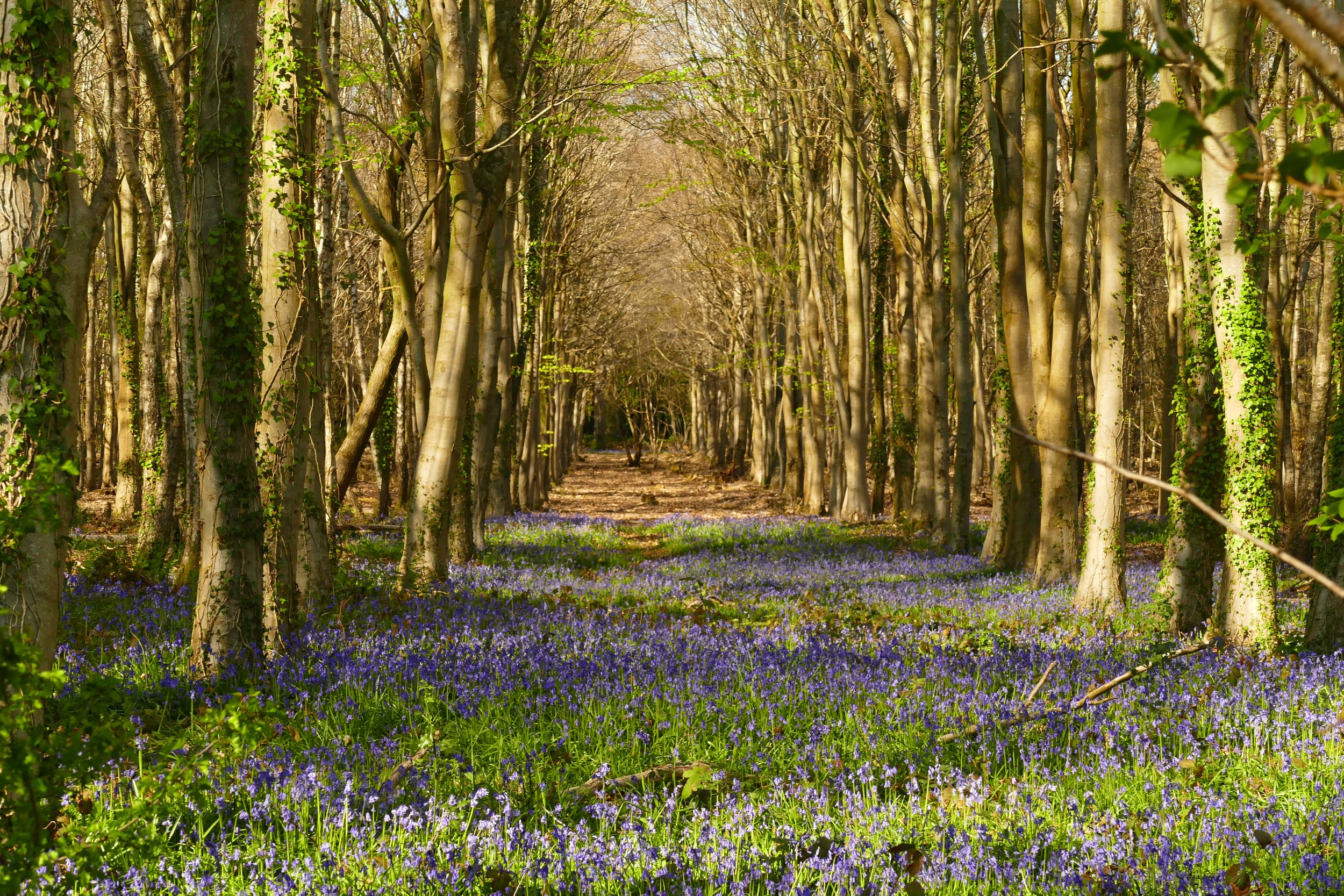Farlington Marshes
Portsmouth
On this walk, children will enjoy the thousands of brent geese that come to graze here in the winter months as well as plenty of other birds to spot.
Views across the water to Portsmouth
The Basics
Time: 1 hour
Distance: 2.5 miles
Terrain: Flat, mostly stony paths
Pushchair: The paths are flat but they are very stony and would make a very bumpy ride. Some of the kissing gates are wide enough for a single pushchair, but others are not so you would have to adapt the paths you chose.
Dogs: Must be on leads
Refreshments: None
Toilets: None
Public Transport: There is no family-friendly public transport option that doesn’t involve crossing busy roads
Parking: A series of three free car parks with height barrier just after the roundabout from the A27 exit (Postcode: PO6 1UN - W3W: bless/solved/digit)
Farlington Marshes is always a lovely walk in the winter sun
There aren’t many walks we do that I actually think are better in the winter, but this could be one. During the colder months especially, this habitat is home to an internationally important population of wading birds and wildfowl. And all just a hop across the water from the city of Portsmouth.
The Route
There are a series of three car parks. The second one is the largest, but if you are walking with children, the third is prefereable as it is close to the start of the walk. At the end of the third car park there is a Wildlife Trust noticeboard and a gate. Go through the gate on your right, passing a blackboard with information about recent wildlife spottings. Soon turn right opposite a little pond and go through the narrow opening in the end of the wooden gate and up onto the coastal wall.
Turn left and walk along the wall. For much of the rest of the walk, you should just stick on this path with the water to your right as you go south then east, with glorious views of Langstone Harbour. Be warned that on windy days this location seems particularly exposed and can be especially windy.
The third length will take you north in the direction of Portsdown Hill and nearing the end of this leg you will see a wide path drop down to your left with no gate across. Follow this in the direction of The Wildlife Trust’s white building.
Soon after the building, you will come to a gate to the left heading onto the grassy marshes. You can either take this for a slightly muddier, longer and more scenic route back or keep right and go onto the paved cycle path for a quicker, but noisier, route to the car park. Noisy, because you will be parallel to the A27!
Did you know?
During the second world war, Farlington Marshes were used as a decoy to divert bombers from Portsea Island. Whilst Portsmouth was in blackout, fires were lit all over the marshes. You can still see a couple of wartime bunkers on the route and some of the ponds in the middle of the reserve were actually formed from bomb craters!
If you liked this walk…
…try this one at Keyhaven Marshes which is a similar coastal nature reserve with a walk along a sea wall.
We are passionate about keeping The Ambling Path as a free resource available to everyone, forever. If you have enjoyed using our walking guides, then please consider leaving us a donation. This will help to cover our costs as well as rewarding the considerable time and effort needed to maintain the site. Thank you.


























